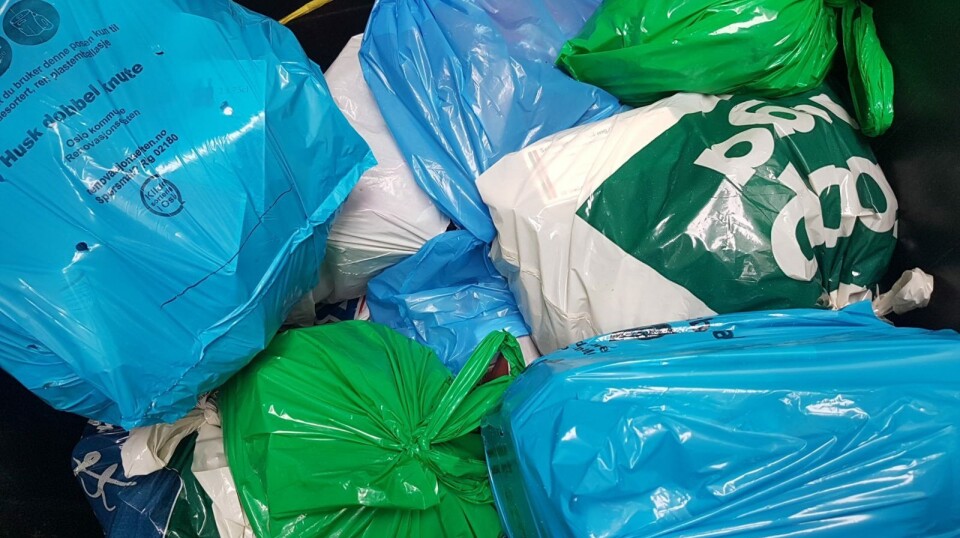THIS CONTENT IS BROUGHT TO YOU BY stami - National Institute of Occupational Health in norway- READ MORE

Automation in waste sorting facilities may be more damaging to workers' health
Working in the waste sorting industry can be associated with several health outcomes.
A recent study from the National Institute of Occupational Health in Norway (STAMI) provides new knowledge about the impact of bioaerosol exposure at different types of waste sorting plants.
The main aim of this study was to understand the levels of exposure to dust, endotoxins, and microorganisms in contemporary, automated waste sorting facilities as opposed to those in traditional, manually-operated waste sorting plants.
“We studied occupational exposure to bioaerosols in sorting plants that use optical sorting machines in comparison to traditional plants, where waste is mostly moved by excavators or manual force,” Elke Eriksen, a research fellow at STAMI, says.
Another aim of the study was to identify work tasks and areas within the waste sorting plants where exposure levels are high. The researchers also wanted to investigate the relationship between occupational exposure and self-reported health data.
High exposure
Previous studies in waste sorting plants have revealed that exposure levels to dust, endotoxins, and fungal particles can be generally high in these environments.
Endotoxins are a type of bacteria-produced toxin that is found on the bacterial cell wall and is released when the bacterium dies and disintegrates.
“The present study showed that dust levels were generally below the current occupational exposure limit for organic dust," Eriksen says.
However, exposure to microbial components like endotoxins and fungal particles was relatively high. These levels varied significantly between automated and manual waste sorting facilities, as well as across different seasons, according to Eriksen.
"The exposure levels were also dependent on the task performed by the employee, which explains the large variation in exposure levels between waste workers within one plant,” she says.
Respiratory health effects
Researchers also found higher levels of fungal fragments and fungal spores in the automated waste sorting plants than in those with more manual operations.
Eriksen explains that the airborne fungal particles were primarily made up of fragments that have a greater inflammatory potential than the fungal spores they usually count to assess the amount of fungus in the workplace air.
The researchers also collected data on the worker’s health, focusing on respiratory health.
“When we compared data from exposed employees with data from those who were not particularly exposed, we found that exposed workers were significantly more likely to suffer from certain symptoms, such as sneezing, congested nose, and runny nose,” Eriksen says.
Nasal symptoms were associated with exposure to high levels of submicronic fungal fragments.
Plants should be assessed individually
Eriksen says that as exposure levels may vary significantly between different work tasks within the same plant, as well as between seasons and plant types, it is important to assess each waste sorting plant individually.
Exposure levels are also somewhat dependent on the type of waste coming in, the collection frequency of the waste, and difference in pre-sorting routines.
“To obtain the most accurate picture of the exposure within a plant, measurements should be repeated, as exposure will vary from day to day in accordance with the types of waste coming in. For instance, a load of open or overfilled food-waste bags that spill their contents will cause a substantial build-up of organic material in the sorting lines,” she emphasises.
Additionally, it might be useful to examine specific tasks that are performed regularly over short periods to identify operations with high exposure levels, such as cleaning sorting machines with compressed air, which generally increases the amount of airborne dust.
According to Eriksen, employees working at highly exposed work stations could benefit from using personal protective equipment to lessen their personal exposure and the potential health risks associated with it.
Reference:
Eriksen et al. An assessment of occupational exposure to bioaerosols in automated versus manual waste sorting plants, Environmental Research, vol. 218, 2023. DOI: 10.1016/j.envres.2022.115040
More content from STAMI:
-
Technical issues at work may increase the risk of sick leave
-
This is what we now know about working from home
-
Why many may struggle with tying shoelaces or buttoning shirts
-
Cellular offices contribute to job control
-
More people develop allergies to common preservative in makeup and household products
-
Are some employees better equipped to defend themselves against workplace bullying than others?





































